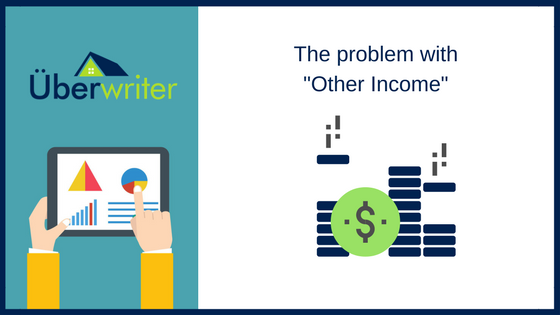A question that has come up in our email box recently is “Can I use “other income” noted on the VOE”? I think the increase of this question in our in-box has to do with the increased use of Fannie Mae’s Day 1 Certainty program. When I reply and ask a few questions it goes something like this. “Fannie Mae does not allow “other” income can you tell me the type of income it is?” I will generally get a puzzled response such as “Mike, Fannie Mae states you can use other income!! While it is true there is a section called other income in FNMA guidelines that is not how verifying income works to qualify!
Where does “other” income come from?
First, let’s break down what is happening with the increased numbers of “other” income showing on VOE’s. When one of the Day 1 income vendors pings the larger companies payroll services, the data is very uniformed. The employees pay is put into a fixed set of categories. The VOE format only knows overtime, bonus, commission, base pay, and tips for income types. If the employer has named any of those incomes differently in their payroll system the automated VOE just pushes the unknown income to the “other” column of the VOE. For example if you have a hourly worker who does work overtime, but the employers payroll software calls overtime “time&half” or “Sunday Double-time”, while the employee knows these are overtime rates the VOE validation does not. So when the VOE data comes into an approved Day 1 vendor for VOEs, it just says this is “other” which then causes FNMA DU not to validate that income. I hope people are not turning down loans and not using overtime due to this system issue. The correct response is to manually calculate the income using other method, NOT tell a borrower you can’t use OT because DU will not allow it. That is false and you are losing deals!!
How to use “other” income
Next let’s talk about “other” income. The key is for the underwriter to investigate what the other income is and make sure it is allowed in the guidelines. When you read the other income section it breaks down many different types of allowable incomes. The guidelines do not state to use any number you find on paystubs to bump up the borrower’s income. For example, Notes Receivable, Pension, Tip Income, and Capital Gains income are all listed as other income. In fact this section of the guideline (FNMA B3-3.1-09) has 25 income types and how to calculate them and what documents you need for each type. To be honest it is hard to find any income that is not outlined in FNMA (for FHLMC) and how to qualify with that income. In my experience 99% of income will fit into something published in the guidelines.
Summary
To wrap it up don’t make the mistake of trying to use unknown or undocumented income to qualify the borrower. This will just come back to bite your bottom line due to declined loans or buy backs from the agencies. Underwriters do your due diligence and find out what is on the paystub and if it will fit into the published guidelines!
Speaking of accurate income calculations, take a look at our program UberWriter, this tool is programmed with all 30+ income types outlined by FNMA,FHLMC, and HUD (for FHA loans). Sign up for a free trial at www.blueprintio.wpengine.com and our software will make sure you don’t lose another loan to a miscalculated income or get a QC error for income for our underwriting friends!

